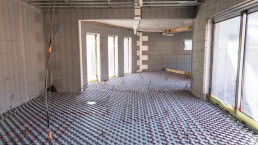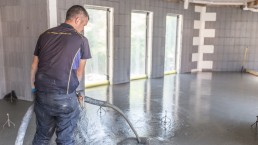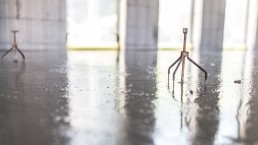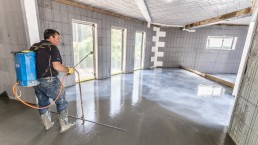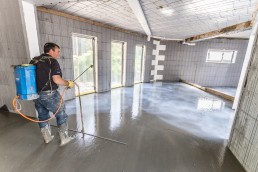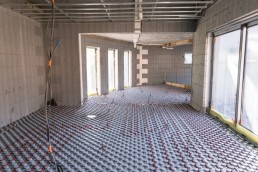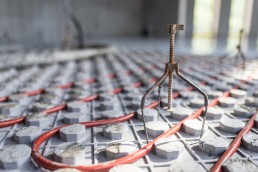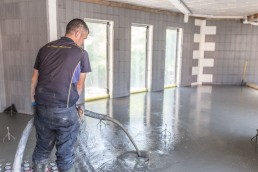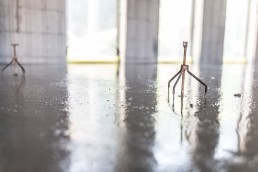ABOUT liquid screed
Liquid screed is a superior self levelling compound which offers a number of benefits over the traditional screed mix. It is made from anhydrite binder instead of cement and can reach strengths upwards of 30 Newton. This sort of compound is best used with underfloor heating systems as it is easily heated and will retain heat for a longer period of time compared to the traditional sand and cement.
Liquid screed can be used in both new builds and extensions
WHY USe liquid screed
- Screed can be laid at a minimum depth of 40mm (50mm with underfloor heating pipes) allowing for more insulation and less material.
- Requires less man power to fit and is usually dry enough to walk on in under 48 hours.
- Usually fitted at a shallower depths than sand and cement, allowing the floor to be more easily heated, therefor reducing energy bills.
- liquid screed has about twice the thermal conductivity as traditional screed.
- Very low cracking and shrinking compared to sand and cement and it will not curl.
- Can be forced dried by slowly turning on the underfloor heating system.
a guide to preparation
- Make sure that the surface floor is brushed and level before laying down the sheets of insulation.
- Lay the sheets of insulation flat on the subfloor and ensure that these sheets do not rock back and forward.
- Next, lay down a thick polythene (500 guage) ensuring that all joints are taped and it is free from creases and punctures.
- Expansion strips should be applied to the perimeter walls.
- Once these steps are complete, the underfloor heating system will be ready to install.
- Make sure that all pipes are securely clipped as they may float if not secured.
- Pipes should be filled before the application of the liquid screed.
- Once all these steps are complete, it is best to give the area a final check to ensure that there are no holes where the liquid screed could run away.
For more information, or to get a price for a project of your own, see below.
GET A QUOTE

